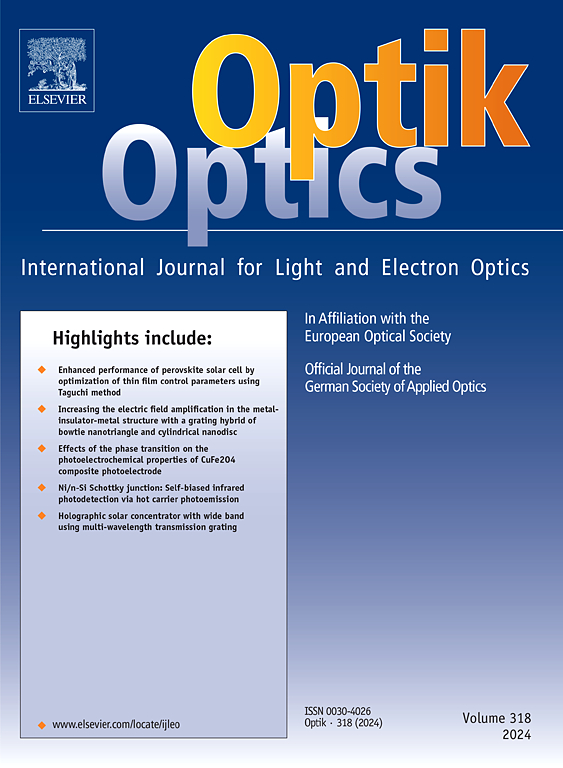Modeling of spectral reflectance characteristics in a semi-distributed interferometer sensor as a randomly segmented structure
IF 3.1
3区 物理与天体物理
Q2 Engineering
引用次数: 0
Abstract
In this work, a refractive-index fiber-optic sensor, referred to as a semi-distributed interferometer (SDI), was modeled to estimate spectral reflectance. The SDI originates from a Fabry–Pérot (FP) structure formed between a cleaved fiber tip and the reflective interface between a single-mode fiber and a high-scattering fiber with a core doped with magnesium silicate nanoparticles. We modeled the SDI as a multilayer system of randomly distributed FP interferometers, each characterized by a different refractive index and length. The reflectance and transmittance of the multilayer structure were numerically calculated using Fresnel reflection and the standard two-mirror FP transmission formula. This approach enables the calculation of the spectral characteristics of the interferometer under the assumption of single reflections at each layer surface. For simplicity, all layer boundaries were assumed to be flat and orthogonal to the beam propagation axis, aligning with the typical configuration of real systems. A superposition of all possible multiply reflected beams was analyzed using a general theory for multi-mirror interferometers. Specifically, the m-th backscattered wave, which passes through m dielectric layers, reflects, and propagates in the opposite direction, was examined. The spectral and sensitivity analyses were performed for several refractive index values. The results demonstrated excellent agreement with previously reported experimental findings.
半分布式干涉仪传感器随机分割结构的光谱反射特性建模
在这项工作中,被称为半分布式干涉仪(SDI)的折射率光纤传感器被建模来估计光谱反射率。SDI源自于一种法布里-普萨罗特(FP)结构,这种结构形成于劈裂光纤尖端和单模光纤与高散射光纤之间的反射界面之间,光纤芯中掺杂了硅酸镁纳米颗粒。我们将SDI建模为随机分布的FP干涉仪的多层系统,每个干涉仪具有不同的折射率和长度。利用菲涅耳反射和标准双镜FP透射公式,对多层结构的反射率和透射率进行了数值计算。这种方法可以在假设每一层表面有一次反射的情况下计算干涉仪的光谱特性。为简单起见,假设所有层边界均为平面且与光束传播轴正交,与实际系统的典型配置一致。用多镜干涉仪的一般理论分析了所有可能的多重反射光束的叠加。具体地说,我们研究了m-th背散射波,它穿过m个介质层,反射,并以相反的方向传播。对几个折射率值进行了光谱和灵敏度分析。结果与先前报道的实验结果非常吻合。
本文章由计算机程序翻译,如有差异,请以英文原文为准。
求助全文
约1分钟内获得全文
求助全文
来源期刊

Optik
物理-光学
CiteScore
6.90
自引率
12.90%
发文量
1471
审稿时长
46 days
期刊介绍:
Optik publishes articles on all subjects related to light and electron optics and offers a survey on the state of research and technical development within the following fields:
Optics:
-Optics design, geometrical and beam optics, wave optics-
Optical and micro-optical components, diffractive optics, devices and systems-
Photoelectric and optoelectronic devices-
Optical properties of materials, nonlinear optics, wave propagation and transmission in homogeneous and inhomogeneous materials-
Information optics, image formation and processing, holographic techniques, microscopes and spectrometer techniques, and image analysis-
Optical testing and measuring techniques-
Optical communication and computing-
Physiological optics-
As well as other related topics.
 求助内容:
求助内容: 应助结果提醒方式:
应助结果提醒方式:


